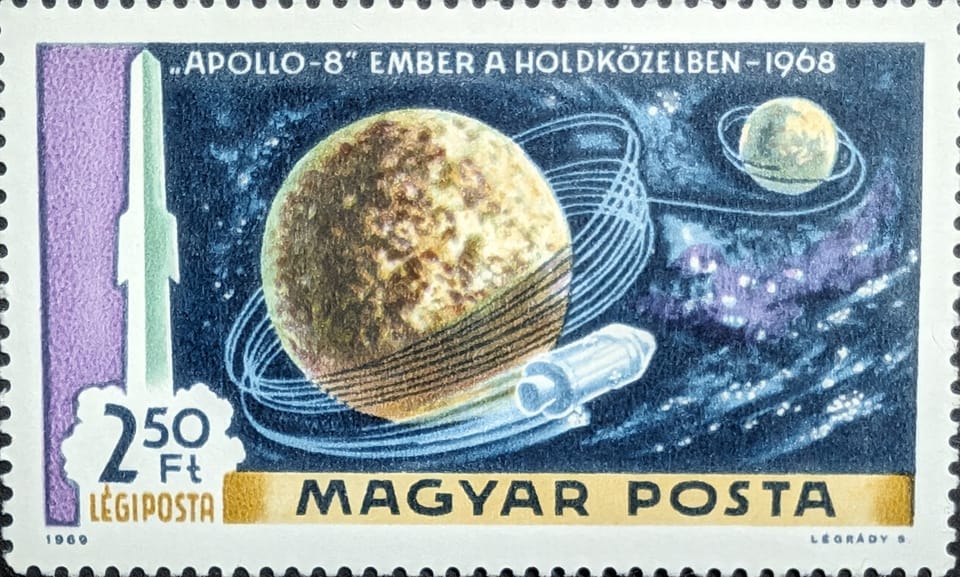Kennedy Space Center–300 Launches Annually?

Marketing numbers, especially industry projections, deserve to be ignored. Unless…unless those numbers can be tethered to history for comparing the projection with the past. There’s always a bit of fun to be had when the opportunity presents itself, especially those space industry forecasts, which are invariably tethered to anything other than history or reality. The lack of grounding is usually why I ignore forecasts for the space industry, whether global or for the U.S.
That’s also why the numbers and possibilities in the story about the Kennedy Space Center, “Could Kennedy Space Center host 300 rocket launches a year?” are at the heart of this analysis. That particular spaceport has a documented history of orbital launches that can shed some light on that article’s question. For those wanting a quick answer, it’s a solid-gold-plated shmaybe. As to the likelihood and curtailed history of why the answer is shmaybe, that’s the point of this analysis.
Reaching 300
Let’s get the easy part out of the way and do some math. Kennedy Space Center (KSC) conducting 300 (assuming orbital) launches in a year would average 25 launches per month. However, KSC has not even conducted 25 orbital launches in a year. The contradiction makes the KSC article a little confusing because the reporter noted that KSC ‘saw’ 75 launches in 2023. Technically, that is true, considering KSC’s excellent view of launches from its next-door neighbor, the much busier Cape Canaveral Space Force Station (the Cape).
It appears the reporter is confusing his numbers by adding launches from the Cape and KSC together. There are differences between the spaceports, such as the primary goals for each and the organizations that own them.
In 2023, the United States Space Force (USSF) hosted 58 launches from the Cape. NASA’s KSC? It hosted 13–over four times fewer launches than the Cape. The closest KSC came to 25 was the 19 launches conducted from it in 2022. Those readers with superior math minds might have noticed that 58 plus 13 does not equal 75. Indeed, the more nerdy might have even added those up to get 71 (nearly six launches per month in 2023). Where did those other four launches go?
I have no idea. But I’m highly confident in my data, which documents 71 successful orbital launches from the Cape and KSC in 2023. And of those 71, KSC’s launchpads hosted 13, averaging slightly more than one orbital launch per month. The spaceport could eventually get to 300 launches per year, but it will need to be a little busier to achieve that number. Thirteen launches annually are far short of the 25 per month required to get to 300 launches per year. Following the reporter’s example, adding the Cape’s and KSC’s 2023 launches together still falls 19 launches per month short.
Approaching the end of April 2024 (20 Apr), this year’s launch monthly launch rates from those two spaceports look more aggressive. The Cape hosted 20 launches, while nine launches were conducted from KSC. Together, the spaceports’ monthly average is a little over seven for 2024 so far, higher than 2023’s. KSC alone has more than doubled its 2023 monthly launch cadence. Both are still significantly short of the baseline 25 launches per month to achieve 300.
Part of the challenge to achieving 300 launches per year is probably that most launches from the Cape and KSC are the result of one company–SpaceX. So far, in 2024, all nine launches from KSC used the Falcon 9, with it taking 18 of the 20 launches from the Cape. In 2023, 55 of the 58 orbital launches from the Cape were conducted by SpaceX. From KSC, 100% of its 13 launches were conducted by SpaceX.
Aging Launch Infrastructure
The Cape’s 58 launches were already a record for that spaceport, with SpaceX significantly contributing to that record. The base’s launch infrastructure is old (with tweaks), nearly as old as Russia’s Soyuz rocket design. The increased launches have already put the Cape’s dated launch infrastructure through the wringer.
The USSF will receive much-needed funding (and other funding opportunities) to update the spaceport based on its anticipation of more launches in the next few years. SpaceX’s constant ratcheting up of desired launch goals (144 for 2024) likely accounts for most of the Cape’s launch predictions. If other launch services begin launching even a tenth as much as SpaceX did in 2023, it is doubtful that the Cape or KSC can keep up with the additional launches until their infrastructures are updated.
The few KSC infrastructure challenges the article mentioned, such as its bridges and power grid, are, perhaps unsurprisingly, similar to the challenges confronting its DoD neighbor. The bridges' age and ability to withstand the transport of rocket vehicles are concerns for the spaceport, especially when faced with the possibility of transporting larger rockets such as Starship. Again, there’s the age issue for the power grid, but there’s also its inability to support the projected power demands of Starship and possibly New Glenn. And those are just the reporter’s examples.
Both the Cape’s and KSC’s infrastructures need significant upgrading to have any realistic hope of hosting 300 launches in one year. They need those updates no matter how many launches will be conducted from their facilities, if only to ensure that launches are performed as safely as possible. There is a niggle about these upgrade necessities, however: will SpaceX be the primary beneficiary of them, or will ULA and Blue Origin (or some other company) also eventually benefit? Will other companies even produce rockets to launch?
Who Benefits?
The reporter understated this aspect of spaceport operations:
“Of course, most of these companies are at a stage of investment, not significant profit-seeking.”
He might be referring to companies such as Relativity Space, which has attempted a single unsuccessful launch, or Blue Origin, which hasn’t launched a single orbital rocket yet. However, the transition of those companies from the investment stage to significant profit-seeking (assuming they ever do) will require time. The new launch services must achieve a comfortable launch cadence before racing ahead to take on SpaceX.
Based on the most recent launch rates, the infrastructure challenges (which require years to update), and the dearth of launch services aside from SpaceX, getting to that number will take many years. The Cape will be upgrading its infrastructure, and KSC will need to do the same to attract other potential launch customers. The ones already using its facilities for rocket development may or may not benefit, depending on their viability.
Sure, KSC could eventually achieve 300 launches annually once it updates its infrastructure. However, if SpaceX is the only company conducting those 300 launches, then KSC’s future would be tied to that company’s fortunes, much like KSC and the surrounding community were to NASA’s space shuttle. That dependence makes its future less assured despite increased launches.
If you liked this article (or any others from Ill-Defined Space), any donations are appreciated. For the subscribers who have donated—THANK YOU!!




Comments ()